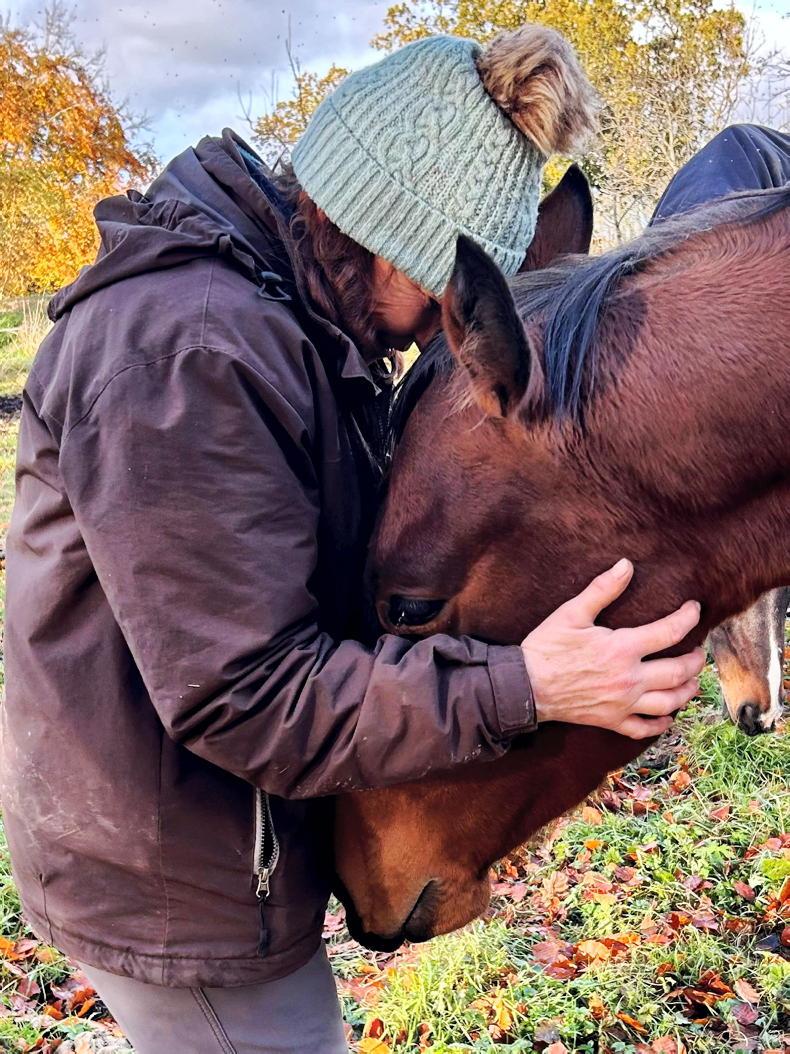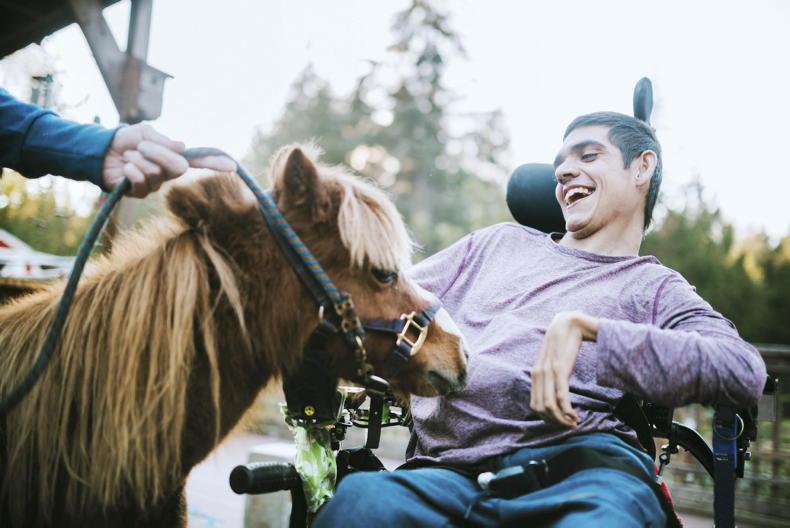Last week, I attended the College of Agriculture, Food and Rural Enterprise (CAFRE) and One Equine event, The Movement of the Horse – Understanding Equine Health, Performance and Training in Equine Assisted Services.
Held at the Enniskillen equine campus, more than 100 attendees were welcomed with lunch and an opportunity to meet up with friends and colleagues in the equine asssisted activities (EAA) sector.
I am a qualified EAA professional myself with a practice in Fermanagh working with police and military veterans, carers and their families. This collaborative meeting of both minds and ambitions for EAA is the crux of why the day was so successful.
Neuroscience
Split into three pertinent topics, presentations covered Equine Movement and Groundwork Training with Rupert Isaacson of Horse Boy Method and Terri Brosnan from ChildVision; Equine Health and Movement with veterinary physiotherapist to Horse Sport Ireland’s High Performance Eventing Squad, Clare-Maria Campbell; and Equine Facilitated Therapy Education for Allied Health Professionals, delivered by Ulster University with occupational therapy lecturers Orlagh Daly and Clare McMonagle.
Rupert and Terri delivered an invigorating presentation in the indoor arena at CAFRE on therapeutic riding and the neuroscience which proves its potency when it comes to supporting people with additional needs. The take-home message was that movement of the horse is so much more than just a ride on a pony — science has proven its efficiency in improving motor skills, balance, strength, postural control, coordination and sensory processing, to name but a few.
Clare-Maria Campbell offered an illustration with live horses, focusing on the importance of musculoskeletal health for horses working in an equine assisted context. Horses undertaking work such as this need to be as fit as any other horse in regular work to help open up the learning receptors of the brain.

Thoroughbred power is harnessed in a unique way at Groundwork Equine Assisted Services in Northern Ireland \ Helen Sharp
Oxytocin
“When you work at a rhythmic canter, particularly a soft collected canter, you get a euphoric response from the child because that hip-rocking rhythm causes the body to produce the feel-good hormone oxytocin,” said Rupert Isaacson.
Orlagh Daly and Clare McMonagle delivered a fascinating talk and discussion on hippotherapy and on the Ulster University post-graduate certificate in Advancing Practice, Equine Facilitated Therapy, the first Ireland and UK Equine facilitated Therapy course of its kind. They also shared case studies that palpably moved the room, evidencing the powerful effect the 2,000 multidimensional movements of the horse in just one 30-minute session, can have for patients with medical, sensory, physical or behavioural needs, .
Oxytocin was certainly the order of the day as we were encouraged to practise our silly walks, to play tag and to hug the person next to us — and it worked. Looking around, the attendees were tired and cold after a long day, but spirits nonetheless were high and attention
was focused after a good laugh and a run about. Point well made.
Last week, I attended the College of Agriculture, Food and Rural Enterprise (CAFRE) and One Equine event, The Movement of the Horse – Understanding Equine Health, Performance and Training in Equine Assisted Services.
Held at the Enniskillen equine campus, more than 100 attendees were welcomed with lunch and an opportunity to meet up with friends and colleagues in the equine asssisted activities (EAA) sector.
I am a qualified EAA professional myself with a practice in Fermanagh working with police and military veterans, carers and their families. This collaborative meeting of both minds and ambitions for EAA is the crux of why the day was so successful.
Neuroscience
Split into three pertinent topics, presentations covered Equine Movement and Groundwork Training with Rupert Isaacson of Horse Boy Method and Terri Brosnan from ChildVision; Equine Health and Movement with veterinary physiotherapist to Horse Sport Ireland’s High Performance Eventing Squad, Clare-Maria Campbell; and Equine Facilitated Therapy Education for Allied Health Professionals, delivered by Ulster University with occupational therapy lecturers Orlagh Daly and Clare McMonagle.
Rupert and Terri delivered an invigorating presentation in the indoor arena at CAFRE on therapeutic riding and the neuroscience which proves its potency when it comes to supporting people with additional needs. The take-home message was that movement of the horse is so much more than just a ride on a pony — science has proven its efficiency in improving motor skills, balance, strength, postural control, coordination and sensory processing, to name but a few.
Clare-Maria Campbell offered an illustration with live horses, focusing on the importance of musculoskeletal health for horses working in an equine assisted context. Horses undertaking work such as this need to be as fit as any other horse in regular work to help open up the learning receptors of the brain.

Thoroughbred power is harnessed in a unique way at Groundwork Equine Assisted Services in Northern Ireland \ Helen Sharp
Oxytocin
“When you work at a rhythmic canter, particularly a soft collected canter, you get a euphoric response from the child because that hip-rocking rhythm causes the body to produce the feel-good hormone oxytocin,” said Rupert Isaacson.
Orlagh Daly and Clare McMonagle delivered a fascinating talk and discussion on hippotherapy and on the Ulster University post-graduate certificate in Advancing Practice, Equine Facilitated Therapy, the first Ireland and UK Equine facilitated Therapy course of its kind. They also shared case studies that palpably moved the room, evidencing the powerful effect the 2,000 multidimensional movements of the horse in just one 30-minute session, can have for patients with medical, sensory, physical or behavioural needs, .
Oxytocin was certainly the order of the day as we were encouraged to practise our silly walks, to play tag and to hug the person next to us — and it worked. Looking around, the attendees were tired and cold after a long day, but spirits nonetheless were high and attention
was focused after a good laugh and a run about. Point well made.







 This is a subscriber-only article
This is a subscriber-only article






SHARING OPTIONS: